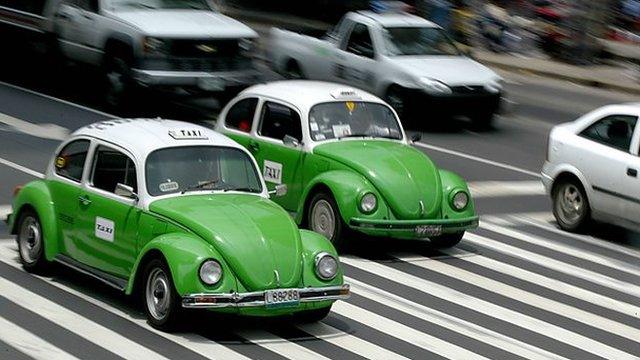Air pollution: How three global cities tackle the problem
- Published
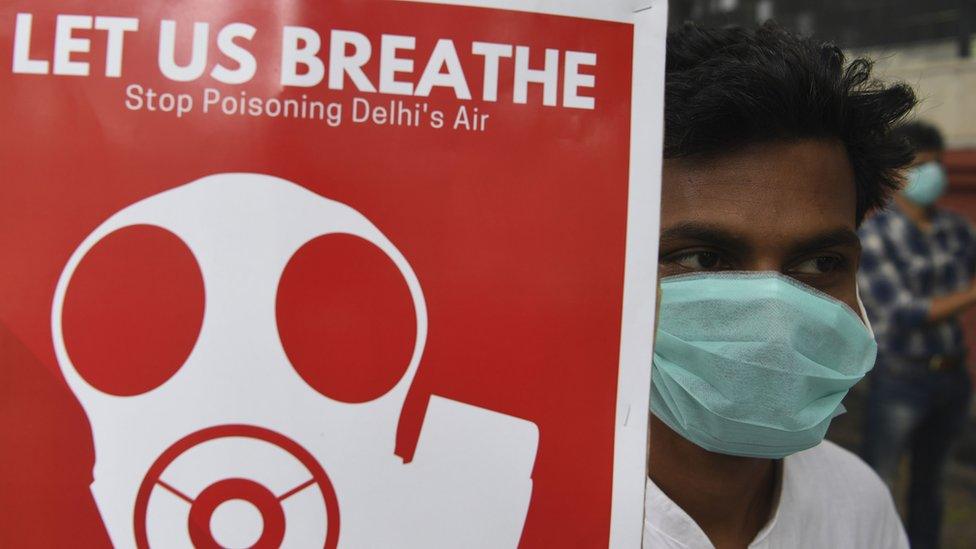
India's capital Delhi is blanketed under a hazardous shroud of air pollution.
City authorities have imposed a car rationing scheme in a bid to bring levels down, but experts believe the real blame lies with crop burning by farmers in neighbouring states.
Delhi is the latest city to try to come up with ways to tackle increasingly dangerous pollutants in the air.
This is what other cities have done in a bid to beat air pollution.
London
The thick smog hung around the capital for four days
When was pollution at its worst?
Thick smog used to frequently blanket the UK capital in the 19th and 20th centuries, when people burned coal to warm homes and heavy industry in the city centre pumped chemicals into the air.
Referred to as "pea-soupers", the most famous of these events was the so-called Great Smog of London in 1952. It was recently dramatised in the first series of the Netflix drama, The Crown.
Cold weather in the preceding days meant people had burned more coal - often of low quality, which released more sulphur dioxide - while inner-city coal power stations added to the haze. An anticyclone then settled over London, trapping cold air under a layer of warm air.
The smog lowered visibility to a few feet and, over four days, is thought to have killed more than 10,000 people.
What was the solution?
In 1956 the UK passed the Clean Air Act.
It regulated both industrial and domestic smoke, imposing "smoke control areas" in towns and cities where only smokeless fuels could be burned and offering subsidies to households to convert to cleaner fuels.
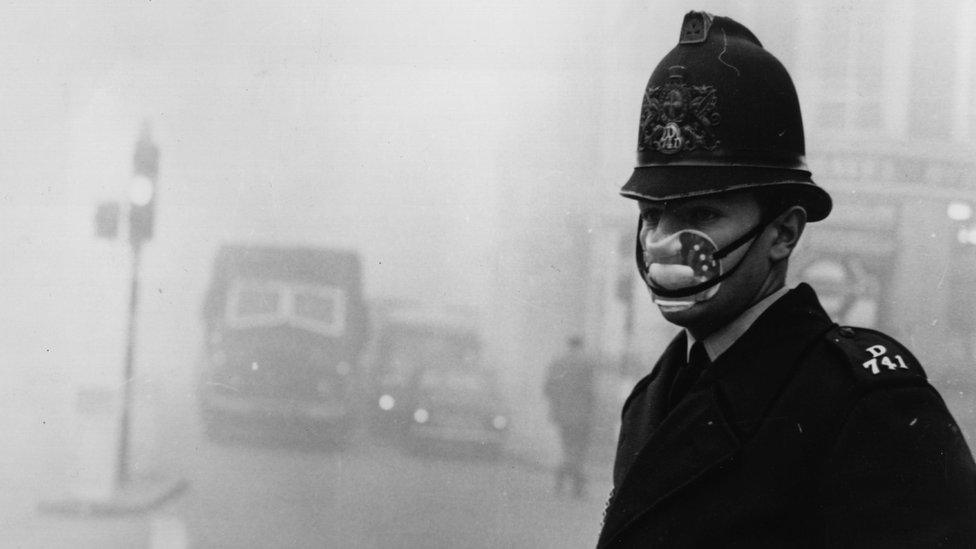
London used to regularly suffer from thick smog
The act was extended in 1968, and air quality substantially improved in London through the following decades.
What's it like now?
Air pollution remains at hazardous levels in London.
The city recently introduced an Ultra Low Emission Zone, which charges drivers of more polluting vehicles. London City Hall said in October that toxic air pollution had dropped by a third in the six months since the measure came into place.
But the UK capital still has some of the highest pollution levels in Europe. Particulate matter and nitrogen dioxide remain the greatest concern, and thousands are thought to die prematurely every year because of pollutants in the air.
Beijing
People in Beijing talk about smog in 2017
When was pollution at its worst?
China's rapid industrialisation brought a huge rise in air pollution.
Coal-burning power stations and a boom in car ownership from the 1980s onwards filled Beijing's air with hazardous chemicals.
In 2014, a report by the Shanghai Academy of Social Sciences said the city was nearly "uninhabitable for human beings", external because of the pollution.
What was the solution?
Years of hard work.
A UN report this year shows that in the space of just four years, between 2013 and 2017, fine particle levels in Beijing dropped by 35%, external, while levels in surrounding regions dropped by 25%. "No other city of region on the planet has achieved such a feat," the report says.
But this was because of measures introduced and refined over the course of two decades, beginning in 1998.
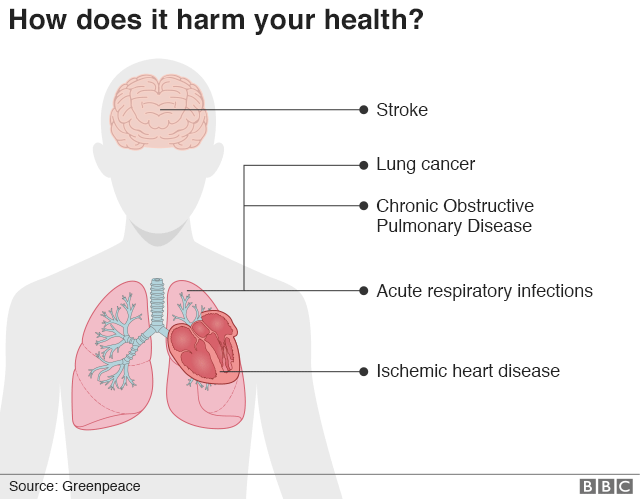
How fine particles known as PM2.5 can affect your health
Since then, the Chinese government has imposed ultra-low emission standards, created an advanced air quality monitoring system, and built more public transport.
What's it like now?
Beijing hasn't entirely fixed its problem. The city still struggles with pollutants - notably the particles known as PM2.5, which are badly affecting Delhi. Commuters in face masks to protect against the poor air remain a common sight.
And numerous cities around China still face pollutant levels far above internationally recommended standards.
But the UN data shows the importance of cutting vehicle emissions, government incentives for private businesses, data transparency, and diversifying the economy away from heavy industry to successfully cut pollution levels.
Mexico City
Hector Ruiz is on a one-man mission to make Mexico City cleaner
When was pollution at its worst?
Mexico's capital was infamous in the 1970s and 1980s for its poor air. Just breathing was the equivalent of smoking dozens of cigarettes a day.
Its tens of millions of inhabitants driving across the huge city in hundreds of thousands of cars pushed pollutant levels sky high. The city's position within a high-altitude valley means the poor air is often trapped by a ring of mountains.
In 1992 the UN gave it the dubious honour of being "the most polluted city on the planet".
What was the solution?
In 1989, the city became the first in the world to impose curbs on car usage.
It cut the number of cars on city roads by 20% from Monday to Friday, depending on their number plates. It immediately helped lower pollutants.
Mexico's drastic bid to reverse decades of deadly pollution
This was followed by a package of reforms dubbed ProAire, which expanded public transport and imposed stricter vehicle emissions standards, among other measures.
All this helped improve Mexico City's air quality substantially in the years that followed.
What's it like now?
Deteriorating. Studies show some locals ignore the Hoy No Circula programme, or buy second cars to ensure they can drive every day.
The population keeps growing, and spreading out - meaning longer trips in more cars. And those who don't drive often rely on older, less environmentally friendly buses to travel.
In May this year city officials declared an environmental emergency after PM2.5 particle levels rose to more than six times the World Health Organization daily mean recommended limit.
Just as with other cities, Mexico City's experience show there is no easy solution to tackling air pollution.
- Published8 April 2019

- Published27 June 2018
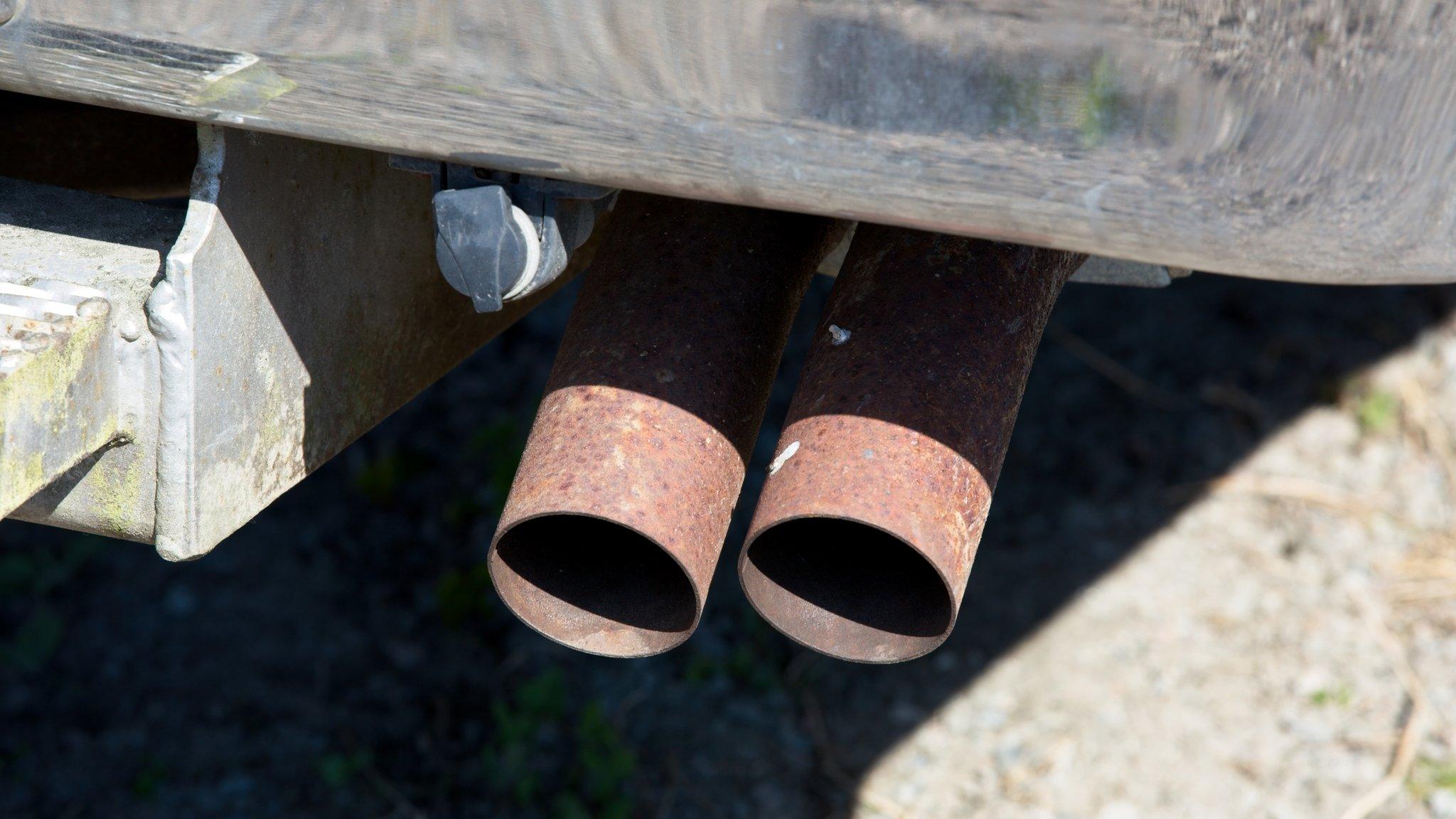
- Published5 December 2012
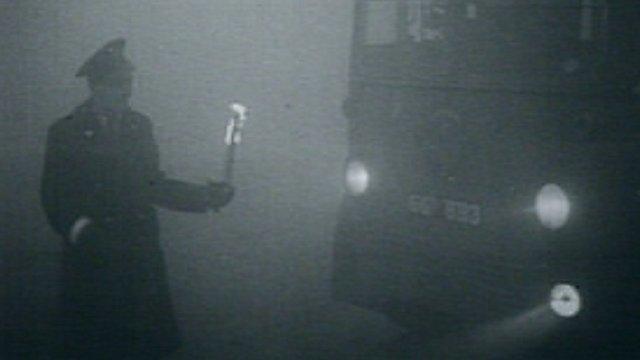
- Published4 May 2017
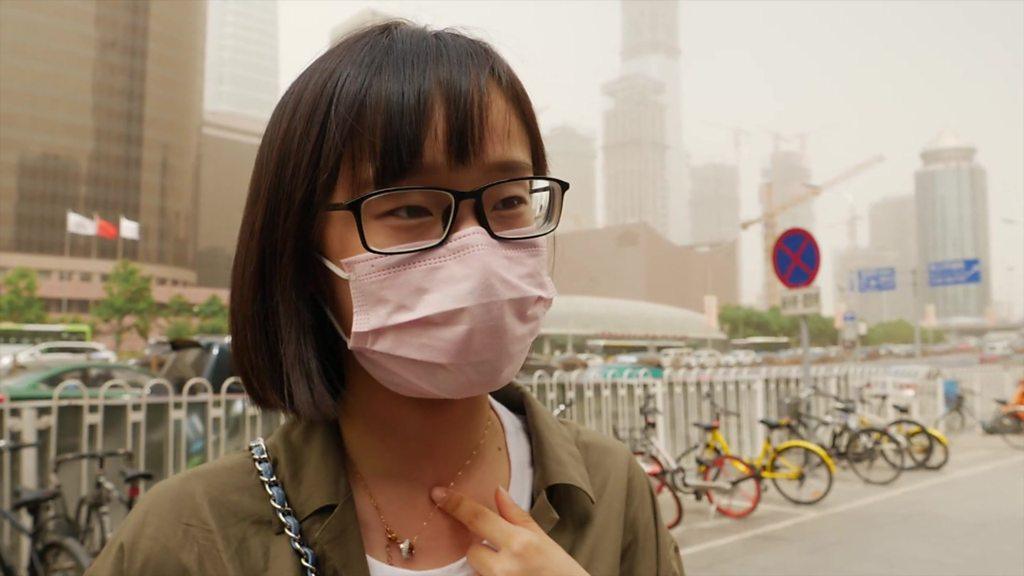
- Published9 January 2018
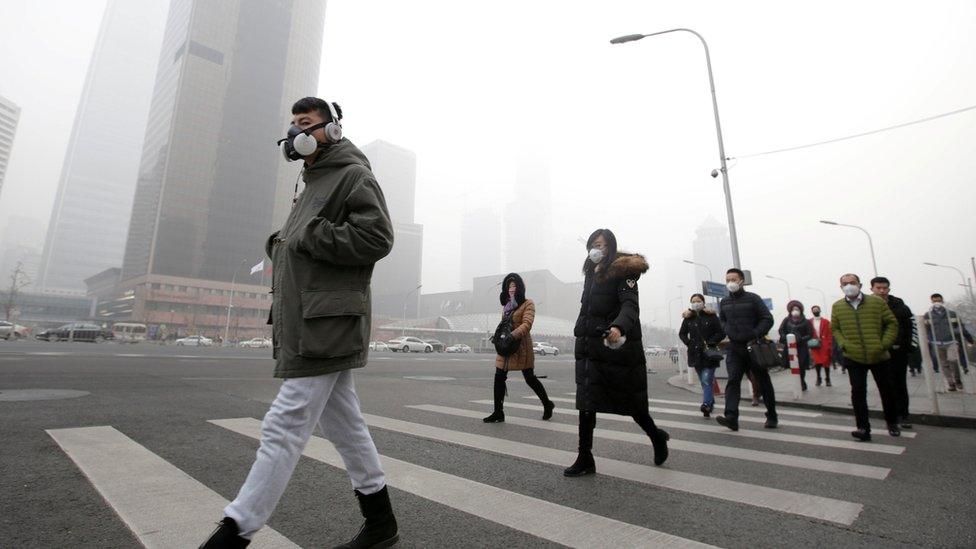
- Published11 March 2017

- Published8 March 2017
